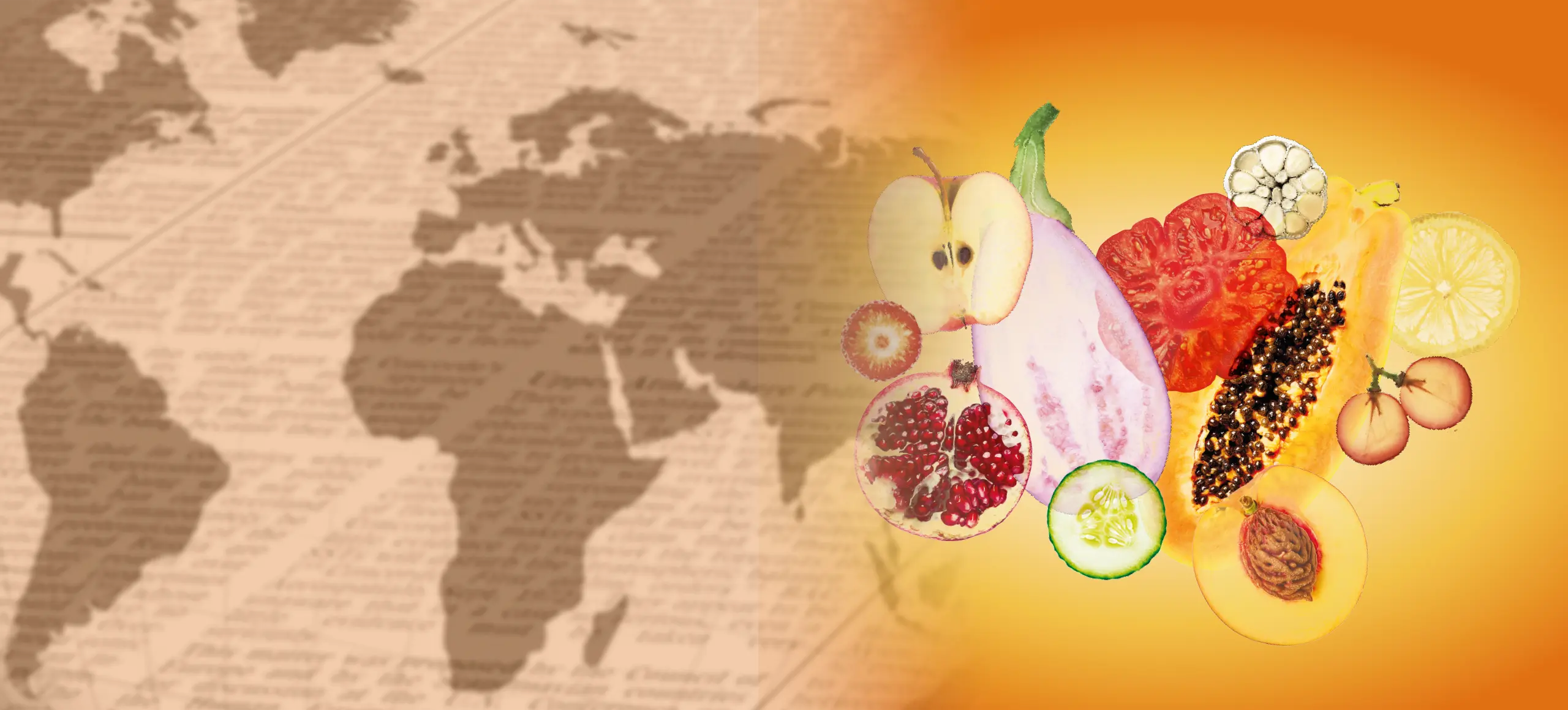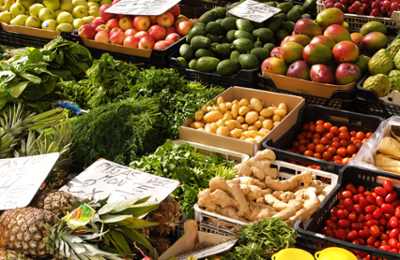

What is food traceability and why is it important today?
Why is food traceability important? What is it and how does it help us? Find out this and much more in our blog on fruit and vegetables for professionals.
What is food traceability?
In a globalised world where food travels thousands of kilometres before reaching our plates, knowing where it comes from, how it has been produced and under what conditions it has been transported is no longer a luxury, but a necessity. Food traceability is the system that allows a product to be tracked from its origin to the end consumer, identifying each step it has taken in the agri-food chain. This is how it is defined by the Spanish Food Safety and Nutrition Agency (AESAN), which highlights its key role in the prevention and management of health risks.
This system not only responds to legal requirements: it is a strategic tool for the food industry, allowing it to act quickly in the event of any alert, limit damage and, above all, preserve consumer confidence. Today, traceability is also synonymous with reputation.
Why traceability is important for fruit and vegetables
Spain is one of Europe's largest exporters of fruit and vegetables. In 2023, according to data from FEPEX, more than 11 million tonnes of these products were exported. The volume, combined with their perishable nature and consumption in their raw state, makes the fruit and vegetable sector one of the most exposed to health risks. Traceability, in this context, is not an option, but an obligation.
But the urgency is not only due to food safety criteria. Regulations are also becoming increasingly stringent. Since January 2024, Regulation (EU) 2023/1231 has been in force, establishing new conditions for the entry of fresh products into the European market, including the obligation to provide digitised information on their origin, phytosanitary treatments and carbon footprint.
On the other hand, traceability responds to social demand. According to the Shopper View study published by AECOC in 2024, 72% of European consumers check the origin of fruit and vegetables before buying them. Transparency and sustainability have become deciding factors, and traceability is the key to being able to offer them.
What you need to know to understand the traceability system
To function, a traceability system must be able to answer four basic questions: what is produced, where it is, when it has been handled, and under what conditions. This data must be recorded in an orderly, reliable, and accessible manner for all actors in the chain, from the farmer to the retailer.
The principle is simple: each product or batch must have a documented history accompanying it. That history begins in the field and ends on the supermarket shelf, but its robustness depends on the commitment of each link in the chain.
Which agents should ensure traceability?
Traceability is a shared responsibility. Producers must record everything from the variety grown to the treatments applied. Processing companies must keep records during processing and packaging. Distributors, for their part, are responsible for conditions during transport, especially temperature and time. At the destination, retailers must provide consumers with clear and accessible information. And above all of them are the competent authorities, responsible for supervising, auditing and sanctioning in the event of non-compliance.
In Spain, the Ministry of Agriculture, Fisheries and Food (MAPA) and AESAN supervise food safety through the National Plan for Official Control of the Food Chain (PNCOCA). This plan coordinates inspections and audits carried out by the competent authorities throughout the country.
What systems are used to control product traceability?
Technology has revolutionised traceability. Today, tools such as blockchain, IoT sensors, RFID tags and digital platforms enable the creation of robust, automated and transparent systems.
Carrefour is a case in point: since 2020, it has been working with the IBM Food Trust platform to apply blockchain to the tracking of fresh products such as chicken, milk and tomatoes. Each link in the chain enters data that is recorded in an unalterable manner, creating a complete history that consumers can consult with a simple scan of the QR code.
RFID tags—chips that allow products to be identified remotely—have become widespread in the transport and distribution of perishable goods. These devices, together with temperature and humidity sensors, allow any deviation in product conditions to be detected in real time.
Platforms such as GS1 Spain also allow this data to be integrated into international standards, facilitating the exchange of information between companies and countries. In sectors such as fruit and vegetables, where products change hands in a matter of hours, this interoperability is key.
Phases for implementing a traceability system
Implementing a traceability system is not just about digitising processes. It involves a structural transformation that requires analysis, planning and training. AESAN establishes a clear roadmap with eight essential steps.
1. Study previous filing systems. The starting point is to find out what data is already being collected and how. This allows gaps, duplications or inefficiencies to be detected.
2. Consult with suppliers and customers. A good system must be adapted to the needs and capabilities of all stakeholders. Listening and reaching consensus is as important as designing.
3. Define the scope of application. Not all products require the same level of traceability. It is necessary to define the scope of the system according to risks, regulations or markets.
4. Establish product grouping criteria. Grouping by batch, date, farm or type of treatment are decisions that directly impact the effectiveness of the system.
5. Define the necessary records. What is recorded, how it is recorded and who records it. This phase involves defining formats, responsibilities and tools.
6. Establish verification mechanisms. A system without control loses its value. Regular internal audits ensure data reliability and continuous improvement.
7. Establish inter-company communication. Traceability does not end at the company's doorstep. It must be fluid and compatible between operators, especially in complex supply chains.
8. Organise procedures for immobilisation or withdrawal. If something goes wrong, a quick response makes all the difference. That is why it is essential to have clear protocols in place to locate, immobilise and, if necessary, withdraw products from the market.
In a context where European food alerts have increased — in 2024 alone, 23% of RASFF alerts corresponded to fruit and vegetables — traceability is consolidating its position as the central pillar of any food safety strategy. Not only does it protect public health, but it also strengthens the competitiveness of the Spanish agri-food sector, adds value to products and responds to growing social demands for transparency.
Ultimately, traceability means being able to look at a tomato and know not only where it comes from, but also who grew it, what water was used, how it was treated and how it reached our table. It means transforming every food product into a story of trust.
Sources consulted:
AESAN – Guía de trazabilidad alimentaria: https://www.aesan.gob.es/AECOSAN/docs/documentos/publicaciones/seguridad\_alimentaria/guia\_trazabilidad.pdf
Reglamento (UE) 2023/1231: https://eur-lex.europa.eu/legal-content/ES/TXT/?uri=CELEX%3A32023R1231
FEPEX – Exportaciones de frutas y hortalizas 2023: https://www.fepex.es/noticias/detalle/exportacion-2023
AECOC – Estudio Shopper View 2024: https://www.aecoc.es/estudio/el-shopper-de-productos-frescos-ante-el-escenario-actual/
AESAN – Informe de actuaciones 2022: https://www.aesan.gob.es/AECOSAN/web/seguridad_alimentaria/ampliacion/informes_2022.htm
Carrefour & IBM Food Trust: https://es.cointelegraph.com/news/chicken-and-greens-97b-retail-firm-uses-ibm-blockchain-to-track-food-supply
GS1 Spain – Sistemas de trazabilidad: www.gs1es.org
RASFF – Informe anual 2024: https://food.ec.europa.eu/systems/rasff_en






